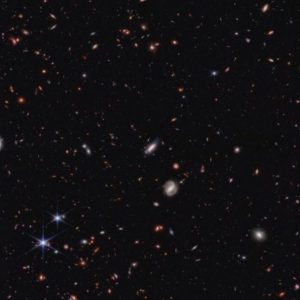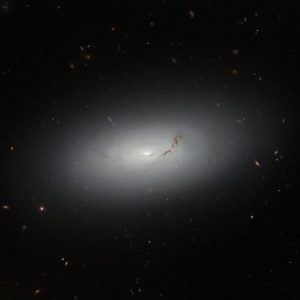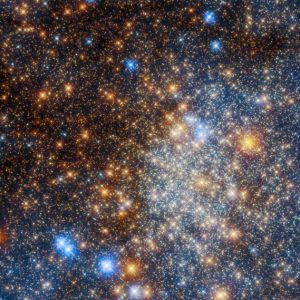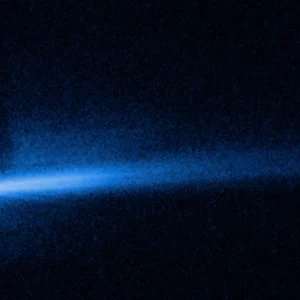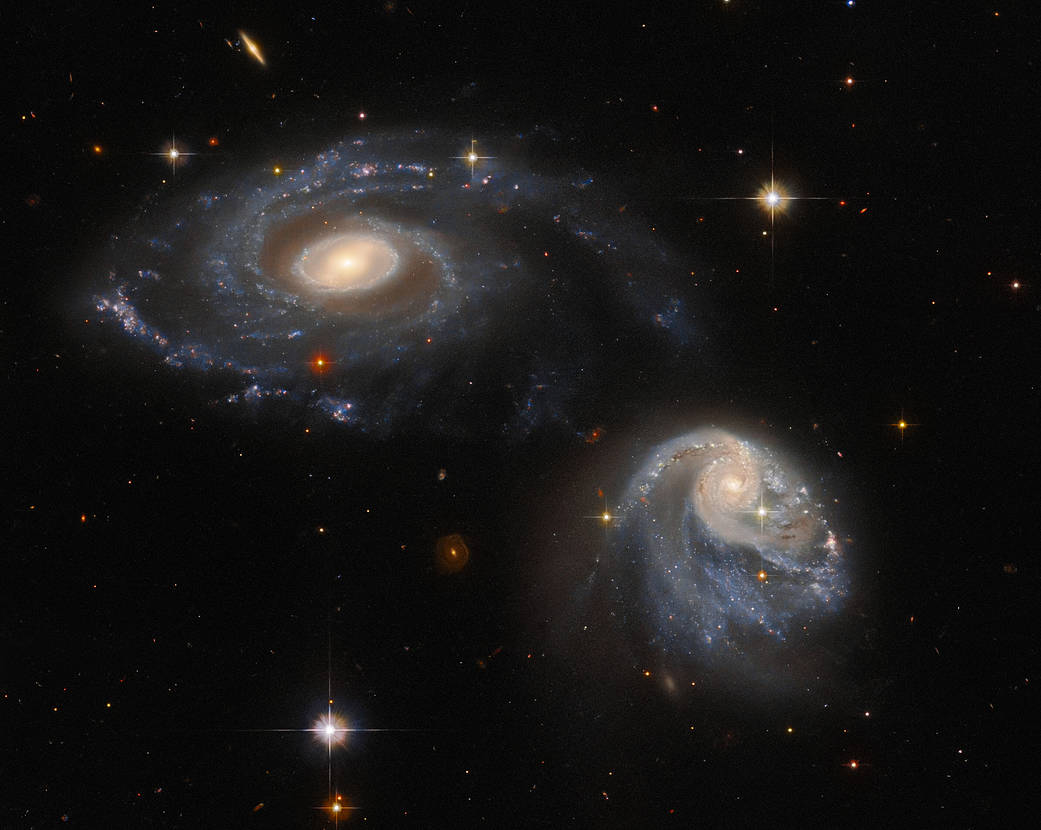Historically, our understanding of the cosmos has been shaped by various observational tools, including the Hubble Space Telescope and the Chandra X-ray Observatory. The onset of the James Webb Space Telescope (JWST) has further revolutionized our knowledge. Some of Webb’s findings have challenged long-standing theories such as the hierarchical model...
Space Pictures
The Hubble Space Telescope, since its 1990 launch, has provided us with stunning views of the cosmos, which include the bright baby bubbles of stellar floss in the N11 region of the Large Magellanic Cloud (LMC), a neighboring dwarf galaxy orbiting the Milky Way. N11, officially catalogued as LHA 120-N...
It’s a matter of star birth. NASA’s Hubble Space Telescope has captured an image of a birthing star, sending out violent jets of energy against the backdrop of a glowing nebula. This star, named FS Tau, is part of a larger system with two main stars, FS Tau A and...
The new image from the Hubble Space Telescope shows the “forbidden” light coming from a distant spiral galaxy. The wonderful spiral galaxy, MCG-01-24-014, is located nearly 275 light-years from Earth. It hosts two prominent and well defined spiral arms, along with a glowing core full of energy, which shines almost...
NASA’s James Webb Space Telescope has sent a stunning image of the Milky Way’s galactic center. The image displays a portion of the dense central area, a never-before-seen view of the Sagittarius C (Sgr C) star-forming region, situated around 300 light-years from Sagittarius A*, the central supermassive black hole of...
The peaceful exterior of the cosmos often hides the tumultuous and explosive events that have occurred within its vast expanse. Recently, the NASA’s Hubble Space Telescope captured an image of NGC 941, a spiral galaxy with an explosive past, situated approximately 55 million light-years away in the constellation Triangulum. The...
The combination of NASA’s James Webb Space Telescope (JWST)’s infrared vision and the Hubble Space Telescope’s visible-light observations has created a vivid panorama of the Christmas Tree Galaxy Cluster, officially named MACS0416. Located 4.3 billion light-years away, this vibrant cluster of galaxies is adorned with flickering “Christmas lights” – 14...
The NASA/ESA Hubble Space Telescope’s Advanced Camera for Surveys (ACS) has captured an unusual galactic pair known as Arp 107.
NASA’s latest lunar images, featured in National Geographic Magazine’s special space issue and created from data captured by NASA’s Lunar Reconnaissance Orbiter Camera (LROC) and the ShadowCam instrument on Korea Pathfinder Lunar Orbiter (KPLO), illuminates the lunar south pole’s unprecedented beauty.
The distance to NGC 3156 is approximately 72.67 million light-years from us. With an apparent magnitude of 12.30 in the V-band and 13.07 in the B-band, NGC 3156 may not be among the brightest gems in the night sky, but its allure lies in its unique characteristics.
In an image recently captured by the Hubble Space Telescope, a globular cluster named Terzan 12 takes center stage, located 15,000 light-years away in the constellation of Sagittarius within our Milky Way galaxy.
The NASA/ESA Hubble Space Telescope has surprised astronomers again by sending them another mesmerizing image of a small irregular galaxy ESO 300-16, located 28.7 million light-years away in the Eridanus constellation.
The new capture is the first of Hubble’s 18 observations of the asteroid since the impact event to reveal an unexpected and startling development: a double tail of debris is emerging from the asteroid system, according to a news release.
The most recent image of two interacting galaxies, floating side by side, from the Hubble Space Telescope illustrates that even in its older years, the telescope is still capable of taking us into deep space.
The James Webb Space Telescope and the Hubble Space Telescope, two of NASA’s Great Observatories, have captured images of a special NASA experiment designed to deliberately smash a spacecraft into a small asteroid in the first-ever in-space test for planetary defense.
